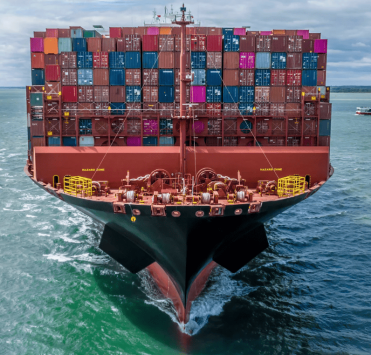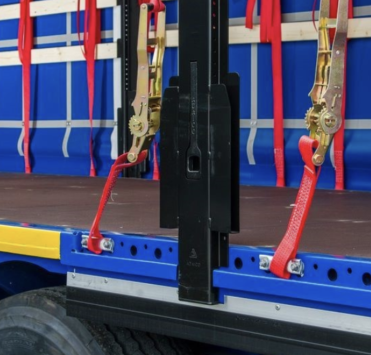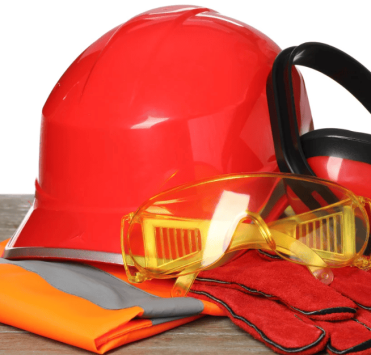Rules and regulations for the transport of bulk cargo by tank trucks

The proper transportation of bulk cargo is a key factor in ensuring cargo safety, preventing environmental and operational risks, and complying with regulatory requirements such as ADR standards for dangerous goods. Bulk cargo requires the utmost care and preparation on the part of both carriers and customers.
Why is the proper transport of bulk cargo so important?
The proper transport of bulk cargo is important not only for the safety of the cargo itself, but also to prevent leaks and environmental contamination. Bulk cargo, especially chemicals and petroleum products, requires special transportation to minimize the risk of accidents, water and soil contamination, and equipment damage. The transportation of bulk liquids also requires strict control of temperature, tank integrity, and compliance with international safety standards.
What are bulk cargoes?
Bulk cargoes are liquid or semi-liquid substances that cannot be placed in traditional packaging such as boxes, containers, or bags. These substances are transported in sealed and specialized tank trucks that ensure the safety and integrity of the cargo during transport. Bulk cargo includes food products (e.g., vegetable oils) as well as chemicals, petroleum products, and fertilizers.
Examples of bulk cargo
- Food cargo — oils (sunflower, soybean, olive), fruit juices, wines, dairy products.
- Chemicals — solvents, acids, alkalis, varnishes, dyes, toxic liquids.
- Petroleum products — gasoline, diesel fuel, fuel oil, kerosene, motor oils.
- Mineral and organic fertilizers — liquid mineral fertilizers, such as ammonium nitrate and other chemicals for agriculture.
Types of tank trucks for transporting bulk cargo
Specialized tank trucks are used to transport bulk cargo, which can be of different types depending on the nature of the cargo being transported. The main categories of tank trucks for bulk cargo are chemical tanks and food tanks. In turn, tank trucks can be thermal (with thermal insulation) and without insulation. Let's take a closer look at these types.
Chemical tank trucks
Chemical tank trucks are designed to transport aggressive and hazardous substances such as chemical reagents, acids, alkalis, solvents, petrochemical products, and other toxic liquids. These tanks have design features that ensure safety during the transportation of dangerous goods.
- Corrosion resistance: Chemical tankers are usually made of materials that are resistant to aggressive liquids. The inner surface of the tank can be coated with special anti-corrosion coatings, which prevents damage from chemicals.
- Design and safety: Chemical tank trucks are equipped with various systems to prevent leaks and accidents. These include reinforced valves, vapor collection systems, and pressure and temperature monitoring equipment. This minimizes the risk of accidents, such as the leakage of hazardous substances in the event of mechanical damage or tank malfunction.
Food tank trucks
Food tankers are designed to transport products used in the food industry, such as vegetable oils, juices, dairy products, and other liquid food products. Food tankers must comply with strict sanitary standards to prevent contamination and maintain product quality at all stages of transport.
- Hygiene requirements: Food tankers have high standards of cleanliness and hygiene. The inner surfaces of the tanks must be smooth and free of defects to prevent the accumulation of product residues. After each transport, the tanks are thoroughly washed and sanitized to avoid cross-contamination.
- Materials: In most cases, food tank trucks are made of stainless steel, which prevents interaction with the transported products and preserves their properties. Special coatings may be used to protect against oxidation when transporting certain types of food liquids.
Thermal and non-thermal tank trucks
Both categories of tank trucks (chemical and food) can be divided into thermal and non-thermal models, depending on the temperature requirements of the cargo being transported.
- Thermal tank trucks are equipped with a thermal insulation system that maintains the temperature of the cargo throughout the entire journey. This is particularly important for the transport of temperature-sensitive products such as vegetable oils, fats, dairy products, or resins. These tank trucks can be additionally equipped with a steam jacket.
- Non-thermal tank trucks are used to transport cargo that does not require special temperature conditions. These tanks are usually not insulated, as the cargo they carry can remain stable at room temperature.
Autonomous heating
Some tank trucks can be equipped with an autonomous heating system. This is useful for transporting liquids that can thicken or freeze at low temperatures, such as oils, bitumen, and other viscous substances.
- Autonomous heaters maintain the optimum temperature inside the tank, ensuring convenience during unloading and preventing the cargo from freezing. These systems can run on fuel, ensuring uninterrupted operation en route, regardless of external temperatures.
Rules for the transport of bulk cargo
International standards and regulations
The transport of bulk cargo is regulated by a number of international standards that define requirements for vehicles, safety, and documentation. These include:
- ADR (Agreement on the International Carriage of Dangerous Goods by Road) — regulates the transport of dangerous liquids and other chemicals.
- ISO (International Organization for Standardization) — establishes standards for tank trucks and bulk cargo transportation systems.
- European Union requirements — directives and regulations covering the transportation of chemicals, petroleum products, and other bulk cargo within the EU.
Basic requirements for temperature, tightness, and labeling
- Temperature control — the transport of bulk cargo requires compliance with certain temperature conditions. For example, vegetable oils must be transported in tank trucks at a temperature between 10 and 40°C.
- Tightness — every vehicle transporting bulk cargo must be completely sealed to prevent leaks or contamination of the environment.
- Marking — tank trucks must have clear markings indicating the type of cargo being transported, its hazard, and special transport conditions.
Safety rules (how to avoid leaks, accidents, etc.)
1. Checking the condition of the tanker before each departure
Before each trip, a thorough check of the condition of the tanker must be carried out to ensure that it is ready for transporting bulk cargo. This includes:
- Checking the integrity and tightness of the tank to prevent leaks.
- Inspecting the internal and external surfaces for cracks, damage, or signs of corrosion.
- Checking the tightness of hatches, valves, and connections, which must be properly closed and secured.
2. Checking the technical condition of the truck
For the safe transport of liquid cargo, it is also important to check the technical condition of the entire road train that will be transporting the cargo. This includes:
- Inspection of the wheel and brake systems to prevent malfunctions en route.
- Checking the suspension system and the condition of the tires to avoid accidents caused by technical malfunctions.
- Checking electrical and lighting equipment (signal lights, brake lights, etc.) to ensure road safety.
3. Replacement of hatch and bottom valve gaskets
Hatch and bottom valve gaskets are important components that ensure the tank is airtight. These components can wear out and lose their effectiveness, leading to possible leaks. Recommended:
- Regularly check the condition of the gaskets and replace them if necessary.
- Replace bottom valves and hatches if signs of wear or damage are found.
- Use high-quality materials for gaskets and valves that are suitable for the specific cargo being transported (e.g., chemicals or foodstuffs).
4. Training drivers on the safe transport of bulk cargo and what to do in case of an accident
Drivers transporting bulk cargo must undergo special training that covers the following aspects:
- Basic safety rules for transporting bulk cargo, including preventing leaks, overloading, and breaches of integrity.
- Emergency procedures: drivers must be prepared to respond to accidents or leaks, including immediately notifying the relevant authorities and taking measures to contain leaks.
- Rules of the road: training includes knowledge of safe driving with heavy loads, avoiding sudden maneuvers, and observing speed limits.
- Regular evacuation and accident response training: To ensure safety, it is important to conduct regular emergency training, including chemical spills, fires, or other emergencies.
The process of transporting bulk cargo
Preparation of the tanker
Before each transport of bulk cargo, the tanker truck must be thoroughly prepared. It is important that it undergoes a mandatory inspection, including the following steps:
- Inspection for defects: the tanker must be inspected for mechanical damage, cracks, signs of wear or corrosion that could lead to leaks or damage during transport.
- Compliance with safety standards: the tanker must be checked for compliance with all safety standards, including tightness, serviceability of valves and hatches, and the presence of all necessary protective elements.
- Tanker washing: after each transport, the tanker must be thoroughly cleaned. If it has transported hazardous or polluting substances, the cleaning process must be carried out using appropriate cleaning agents and technologies. After cleaning, a cleaning certificate is issued confirming that the tank has been cleaned and is ready to transport new cargo. This certificate must be presented by the driver when loading the cargo.
Analysis of the customer's order: Before preparing a tanker for a specific transport, a detailed analysis of the order must be carried out. This includes the following steps:
- Study of the material safety data sheet (MSDS/SDS): The safety data sheet contains all the necessary information about the substance being transported, including its chemical nature, properties, hazards, and precautions for transport. This document helps to select the right tanker and prepare it for transport.
- Selecting a tanker with the appropriate steel type and volume: Depending on the type of cargo, it is necessary to select a tanker with the appropriate characteristics. For example, chemical substances may require a tanker with an anti-corrosion coating, while food products may require stricter hygiene requirements. It is also important to correctly calculate the volume of the tanker depending on the amount of cargo to be transported in order to avoid overloading or insufficient volume.
- Consider the specifics of the substance being transported: If the cargo needs to be kept at a certain temperature or in temperature-sensitive conditions, you should choose a thermal tanker with thermal insulation or a heating system to prevent the cargo from freezing or overheating.
Loading and unloading (main steps and technologies)
Loading bulk cargo requires careful control to avoid mistakes that could lead to leaks or damage:
- Loading is carried out using pump systems and pipelines, which must be properly connected and leak-proof. Safety rules must be strictly followed when connecting equipment to avoid leaks, especially when working with chemical and hazardous cargo.
- During loading, it is also important to monitor the pressure in the system and the temperature if these are important for safe transport (e.g., for thermal or chemical liquids).
Unloading bulk cargo also requires the use of specialized equipment:
- Hoses, adapters, compressors, pumps — all these elements must be checked and ready for safe unloading. It is especially important that all connections are tight and the equipment is in good working order.
- Unloading must be carried out in a strictly designated area where it is possible to respond quickly in the event of an accident (e.g., spills).
Safety and precautions
To prevent leaks and accidents, it is important to regularly check the technical condition of tankers, train drivers, and carry out preventive maintenance of equipment. The use of modern technologies and monitoring systems minimizes risks.
Drivers working with bulk cargo must be professionally trained and have the appropriate qualifications to handle such cargo safely.
Conclusion
The transportation of bulk cargo is a complex and responsible process that requires compliance with all safety regulations, controlled temperature conditions, and the use of specialized vehicles.
- Follow strict safety requirements at every stage of transportation.
- Conduct regular inspections of tank trucks.
- Maintain high staff qualifications and train drivers.
Why trust SaveProSolutions with your bulk cargo transportation?
Compliance with international standards: we strictly comply with safety, temperature, and leak-proof requirements and regulations for the transportation of bulk cargo.
Guaranteed timeliness: our team will ensure delivery within the agreed time frame, minimizing the risk of delays.
Long-term partnerships: our company has built trusting relationships with our customers, guaranteeing a high level of service and support at every stage of the process.









